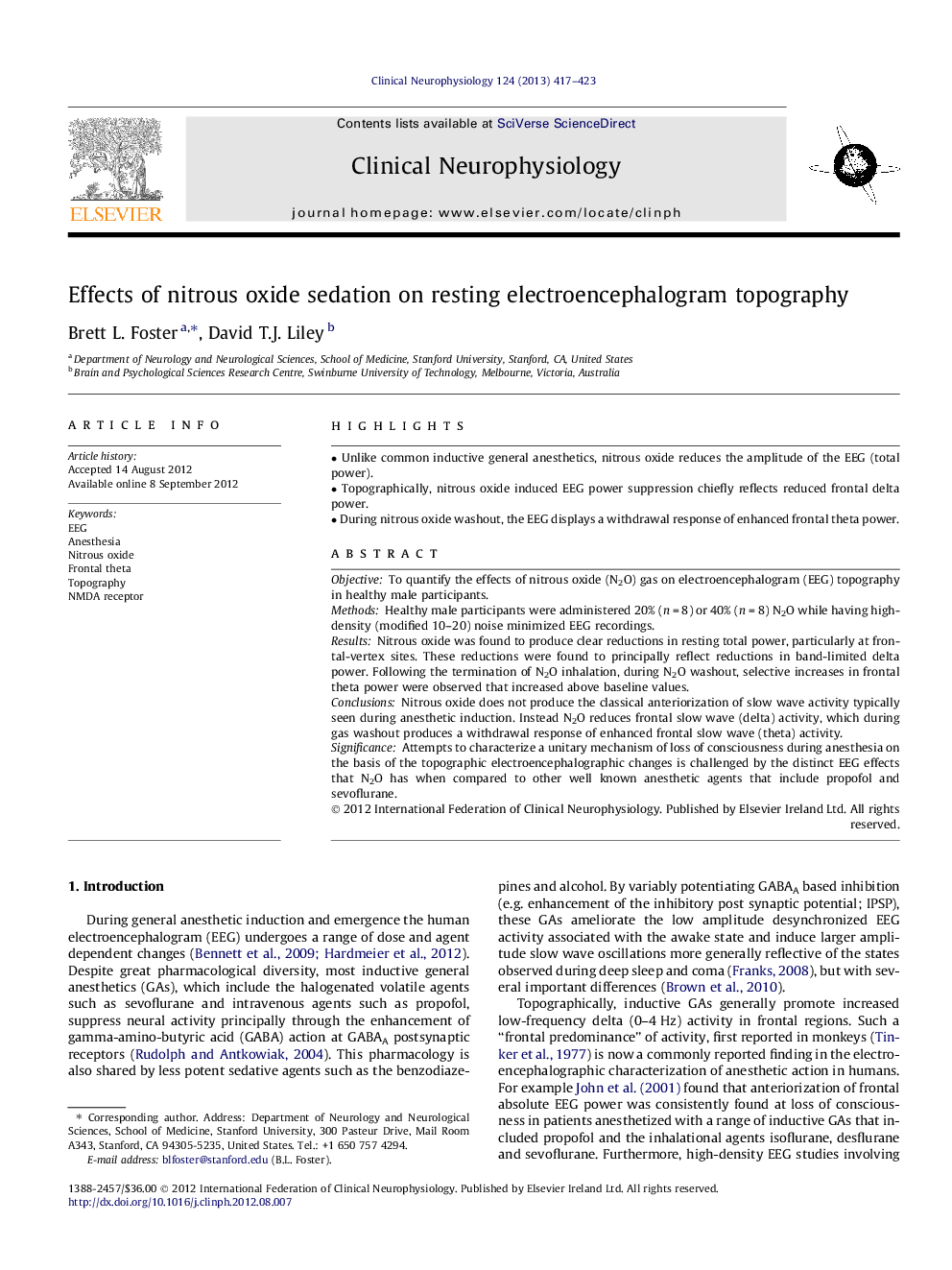| Article ID | Journal | Published Year | Pages | File Type |
|---|---|---|---|---|
| 3044624 | Clinical Neurophysiology | 2013 | 7 Pages |
ObjectiveTo quantify the effects of nitrous oxide (N2O) gas on electroencephalogram (EEG) topography in healthy male participants.MethodsHealthy male participants were administered 20% (n = 8) or 40% (n = 8) N2O while having high-density (modified 10–20) noise minimized EEG recordings.ResultsNitrous oxide was found to produce clear reductions in resting total power, particularly at frontal-vertex sites. These reductions were found to principally reflect reductions in band-limited delta power. Following the termination of N2O inhalation, during N2O washout, selective increases in frontal theta power were observed that increased above baseline values.ConclusionsNitrous oxide does not produce the classical anteriorization of slow wave activity typically seen during anesthetic induction. Instead N2O reduces frontal slow wave (delta) activity, which during gas washout produces a withdrawal response of enhanced frontal slow wave (theta) activity.SignificanceAttempts to characterize a unitary mechanism of loss of consciousness during anesthesia on the basis of the topographic electroencephalographic changes is challenged by the distinct EEG effects that N2O has when compared to other well known anesthetic agents that include propofol and sevoflurane.
► Unlike common inductive general anesthetics, nitrous oxide reduces the amplitude of the EEG (total power). ► Topographically, nitrous oxide induced EEG power suppression chiefly reflects reduced frontal delta power. ► During nitrous oxide washout, the EEG displays a withdrawal response of enhanced frontal theta power.
